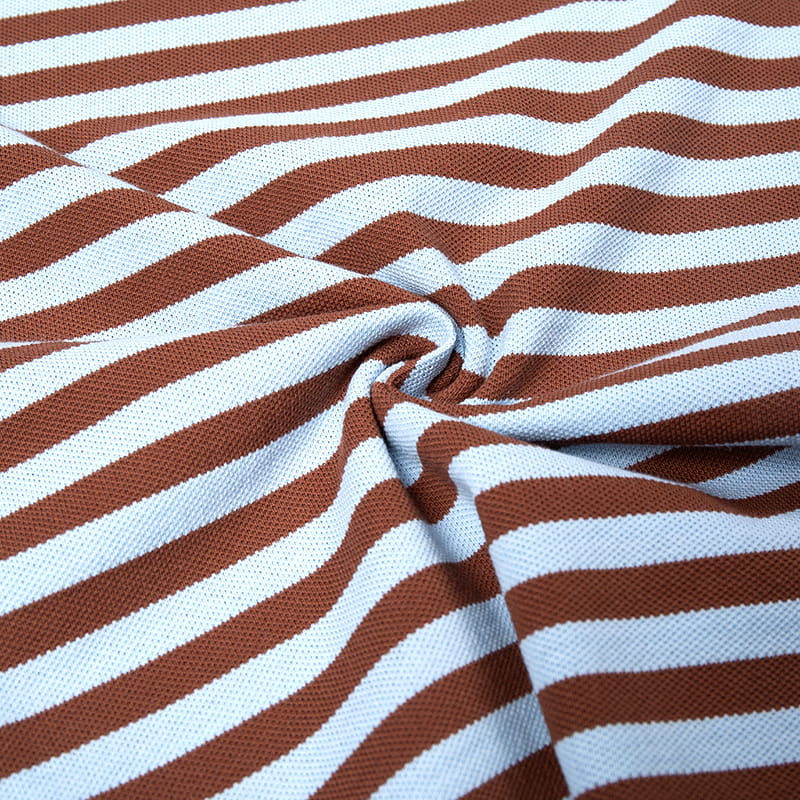
The liquid permeability of pique knitted fabrics, which refers to their ability to allow liquids to pass through, is influenced by a variety of critical factors:
Knit Structure: The specific knit pattern and structure of the pique fabric are fundamental. Different stitch patterns (such as plain knit or ribbed knit) and densities can significantly impact how tightly or loosely yarns are intertwined, thereby affecting the spaces available for liquid penetration.
Yarn Properties: The type of yarn used—whether natural fibers like cotton or synthetic fibers like polyester—and the yarn count (which refers to the thickness or fineness of the yarn) influence the gaps between yarns. These gaps directly affect how easily liquids can permeate through the fabric.
Fabric Thickness: Thicker fabrics generally have more layers, which may hinder liquid penetration compared to thinner fabrics. However, the specific weave or knit structure and the type of yarn used can alter this relationship.
Surface Treatments: Finishing treatments applied to the fabric surface, such as water-repellent coatings or laminations, can modify the surface properties of the fabric. These treatments can enhance the fabric's ability to repel liquids or reduce liquid absorption.

Wetting Behavior: The contact angle that liquids form on the fabric surface (known as wettability) and the surface tension of the liquid itself play crucial roles in determining how readily liquids can penetrate the fabric. Fabrics designed with hydrophobic properties repel water more effectively than those with hydrophilic characteristics.
Fabric Tension and Stretch: The tension applied during the knitting process and subsequent processing stages can alter the interstitial spaces between yarns within the fabric. Changes in tension can affect the fabric's overall permeability to liquids.
Fabric Porosity: The overall porosity of the fabric, which refers to the volume of void spaces or gaps between fibers or yarns, directly impacts its liquid permeability. Fabrics with higher porosity generally allow liquids to pass through more quickly than those with lower porosity.
By carefully considering and manipulating these factors, manufacturers can tailor pique knitted fabrics to meet specific requirements where liquid permeability is crucial. This customization is particularly important in applications such as sportswear, outdoor apparel, medical textiles, and industrial fabrics, where managing liquid exposure is essential for performance and comfort.


 English
English 中文简体
中文简体











